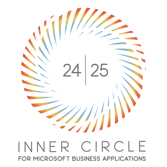In our previous Tech Talks blog posts, we've talked about integrations between D365 CE and F&O with Dual Write, CDS Data Integrator and Virtual Entities. However, what if none of these standard integrations and connectors meet your requirements? If so, look no further than Custom Connectors. With Custom Connectors, you can create a connector with your own triggers and actions.
How do Custom Connectors work?
A Custom Connector (or custom connector) is a wrapper built around the F&O Dataverse API that allows Logic Apps, Power Automate or Power Apps to communicate with that REST or SOAP API.
This wrapper handles a variety of tasks, from authentication to authorization as well as sending messages to processing actions.
The connectors are made up of a set of triggers and actions, which you can use to build your integration in low-code fashion. You should really think of the connector as a building block, as it is not a complete integration platform. You can then link the building blocks back to Power Apps, Power Automate, or Logic Apps (Azure Integration services).
There are a number of requirements for using Custom Connectors. For example, these connectors are only available for online deployments. Want to use them on-premises? Then you need a side-to-side VPN and a solution such as Power Apps, for example.
The configuration depends on the tools you will be using. However, in all cases you achieve this by using the handy visual designer, setting up all the triggers and actions. For example: a new customer in the system (trigger) > update a field (action). The tool will guide you through the entire setup process.
Benefits of Custom Connectors
Now that you know more about how Custom Connectors work, let's look at the key benefits:
- Although you will be working with your own triggers and actions, you don't have to do any custom coding yourself. The connector takes a lot of work off your hands.
- The connector is a real building block, allowing you to assemble and combine the components yourself in the way that best suits your integration requirements.
- Configuration takes place within a convenient visual editor that guides you through the process.
- With a Dynamics license, there is no additional cost for using the components in Power Automate or Power Apps.
Drawbacks of Custom Connectors
Like any form of integration, Custom Connectors also come with some drawbacks to consider:
- The F&O connector has only one trigger, meaning you will most likely need to configure additional alerts or events yourself. This has a negative effect on performance, given that the APIs are not suitable for large volumes of data. While Microsoft is working on this, this does bring with it a higher level of complexity.
- Using the connector in Logics Apps incurs (limited) costs for each action. What's more, you're going to need some technical capacity, for example, to expand entities or procedures.
- Lastly, while the Dataverse Connector will have more actions when you use it in Power Automate (e.g. for uploading images), these actions are not available as a building block in Logic Apps.
Want to know more about Custom Connectors? Then check out our in-depth Tech Talk video on the subject.
Can you rely on Custom Connectors?
Custom Connectors are very handy, especially when combined with other components in Azure Integration Services. It is a simple and reliable solution for meeting many needs and requirements. However, be sure to always bear in mind that rather than being a complete integration platform, it is made up of individual building blocks. This means you do need someone to provide guidance on set-up and scenarios, along with providing the resources to implement it.
Want to know more about the possibilities of Custom Connectors for your organization?
Contact our specialists, who will be happy to advise you.




